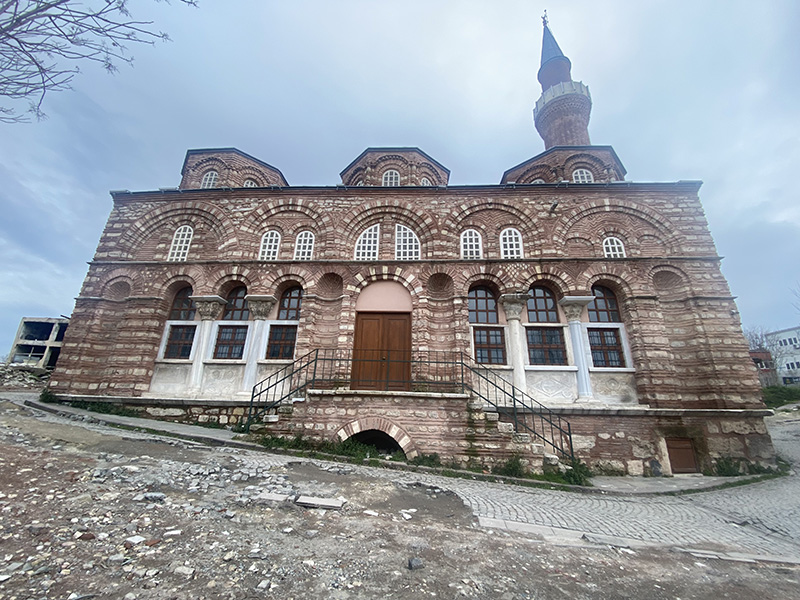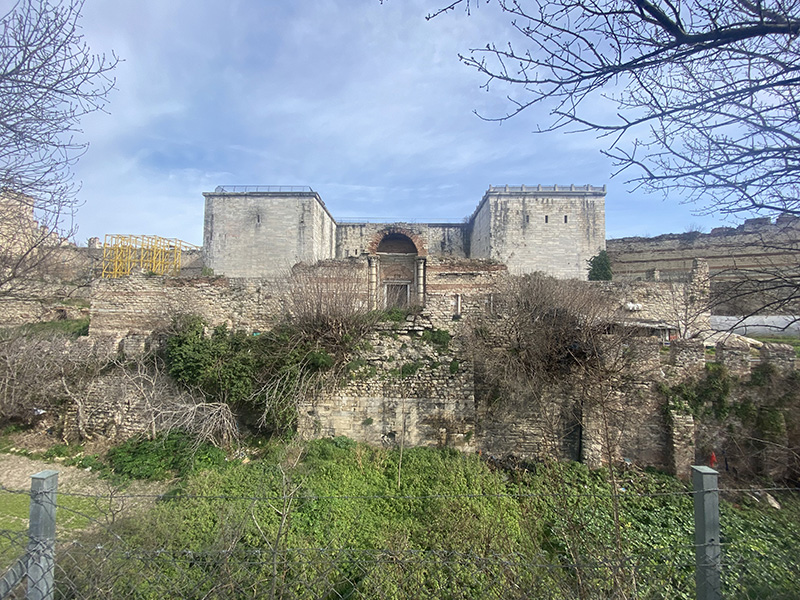
At ANAMED, Dr. Varsallona aims to finalize her book, Constantinople 1261–1453. This book contextualizes the urban transformations of the Byzantine capital during the last two centuries of Byzantine rule, which are also known as the Palaiologan period, after the ruling dynastic family, the Palaiologans (1261–1453). It portrays Constantinople as a “living entity” shaped by the will of imperial and aristocratic patrons, built by laborers and artisans, and lived by its cosmopolitan inhabitants.
Thanks to the combined analysis of surviving archaeology, art history, and textual production, the book reconstructs streets, quarters, and the use and significance of many buildings. Within a solid historical framework, the volume demonstrates that, rather than being the result of casual restorations or commissions, Palaiologan building activity was carefully planned, charged with ideological meanings, and responded to specific topographic concerns of the ruling powers.
This form of urban planning gradually created a group of differentiated quarters within the city, responding to the different and adaptable exigencies of their patrons. Remarkably, far from being interrupted by the fall of the city to the Ottomans (1453), as widely believed, the Palaiologan urban setting impacted the subsequent urban evolution of the city, when it became the new capital of the Ottoman Empire.
The main goal of my semester in Istanbul was to fill a gap in my doctoral research on Palaiologan Constantinople (1261–1453). The global pandemic impacted my travel schedule in 2020 and 2021, and I missed the opportunity to finalize the investigation of some of the structures of the Palaiologan period. Moreover, in recent years, most buildings underwent restorations and excavations (Tekfur Sarayı, Vefa Kilise Camii, Fethiye Camii, Fenari Isa Camii). In some cases, these works brought to light additional structures. Considering these premises, a long period of inspections in situ was of utmost importance for transforming my doctoral thesis into my first monograph.
In Istanbul, since February, I have been re-investigating all the buildings generally dated to the Palaiologan period. Recent work at Vefa Kilise Camii has exposed additional structures, which will help me to reconstruct the organization of the monastic complexes more broadly, not just concerning church spaces, and beyond the limits of the early Palaiologan period. The discovery of architectural sculpture, through its peculiar decoration, can help me to further speculate on the network of patrons (and artisans) gravitating around the monastic centers. Similar considerations apply to Fethiye Camii, though access to the building has not been officially granted, like at Kariye Camii. The announced opening of the latter in May will be very welcomed.

In these months, I also had the chance to investigate buildings generally associated with earlier phases of Byzantine history that I had only transversally examined so far. For some of these structures, it is plausible to hypothesize a Palaiologan restoration that expands my catalogue. For example, thanks to the re-opening of the Yedikule fortress and the observations of the surviving Byzantine structures, I can now contextualize the Middle and Late Byzantine interventions at the Golden Gate. In any case, this on-site work has allowed me to rebalance the focus of my manuscript on both material and written evidence. The equal integration between these two aspects was one of the main objectives of my study, but the impossibility of reaching Istanbul had undermined it.

Above all, the continued exposure to the monumental evidence of Byzantine Istanbul allowed me to switch from an exclusive monument-focused approach to a topographic perspective. My work now embraces the significance of the Late Byzantine building activity for the development of the whole city. I am now fully aware of the visual and spatial connections between clusters of monuments, including churches, palaces, and columns. Specifically, I devoted attention to the surroundings of buildings/ruins like the Odalar Camii, Kasım Ağa Mescidi, Kefeli Mescidi, and Boğdan Sarayı to better contextualize the location of the famous Byzantine monastery of St. John at Petra and its environments within the area of the city in question. My book’s principal narrative, namely the contextualization of the surviving buildings within their urban landscape, has much benefitted from it.
The location of ANAMED has encouraged my thorough exploration of medieval Pera/Galata, which offered tools to contextualize the cross-cultural contacts of the Palaiologoi. With the help of local scholars, who specialize in the architecture of the Genoese settlement, and with all the necessary time to request special permits for visiting specific buildings (e.g., the church of Saint Benoît), I am now more conscious of the topographical development of the site and ready to discuss in depth the architectural comparisons and discrepancies with Late Byzantine Constantinople. One chapter of my book deals with the communities of Mendicant friars in medieval Constantinople (and Pera), namely the Franciscans in the thirteenth and fourteenth centuries. However, I am expanding this enquiry to the fifteenth century, when the role of the Domenican community (once based at the complex now known as Arap Camii) gained additional relevance. In this regard, establishing contacts with some of Dost-I’s members (Domenican Study—Institute) was an important step forward.
Moreover, my stay at ANAMED has facilitated my visit to other contemporaneous Anatolian centers, such as Trabzon and Konya. Their architectural development partially corresponds to the chronology of my research, and studying it permitted me to appreciate my material from a different perspective. By June, I will have surveyed some of the areas of Thrace, since some of the building activity here shares patronal links with Palaiologan Constantinople. However, the main goal for the upcoming weeks will be working with the photographic collections of centers, such as the German Archaeological Institute, to better understand the Palaiologan phases of complexes like Kefeli Mescidi, Odalar Camii, and St. Euphemia.
Constantly reflecting on the use that current Türkiye makes of its different pasts (namely the Byzantine, the Seljuk, and the Ottoman, in comparison) gave me additional food for thought. This is beneficial and will implement my research on the reception of Byzantium in the nineteenth and twentieth centuries, which I am developing as a parallel path. I am particularly interested in the dispersion of Byzantine materials from Constantinople and their collection in the United Kingdom. A recent article (2024) I published with my colleague Flavia Vanni (also an ANAMED fellow) stemmed from my research on the Palaiologan building called Boğdan Sarayi. In this article, I have demonstrated that the link between the English collector (Edwin Freshfield) and Constantinople was the Reverend Curtis of the Anglican Church (Crimean Memorial Church) of Istanbul. However, the specific passages of this link still need to be investigated. The Crimean Memorial Church is not too far from ANAMED, and its architecture participates in the medieval revival that spread in nineteenth-century Europe. These are topics that I am discussing almost daily with Artemis Papatheodorou, who is working here at ANAMED on topics related to the Ottoman legislation of antiquities. Thus, in terms of networking, my stay at ANAMED offered chances to develop my future projects, too.
Finally, I am now aware of most of the urban developments, restorations, and discoveries concerning Byzantine and early Ottoman Istanbul, and I collected a large amount of additional photographic material, which I will discuss in my classes on Byzantine Constantinople. I have received this opportunity to know the city better, and I am sure I will give it back, in turn, in a different form, to the students at the University of Edinburgh.

